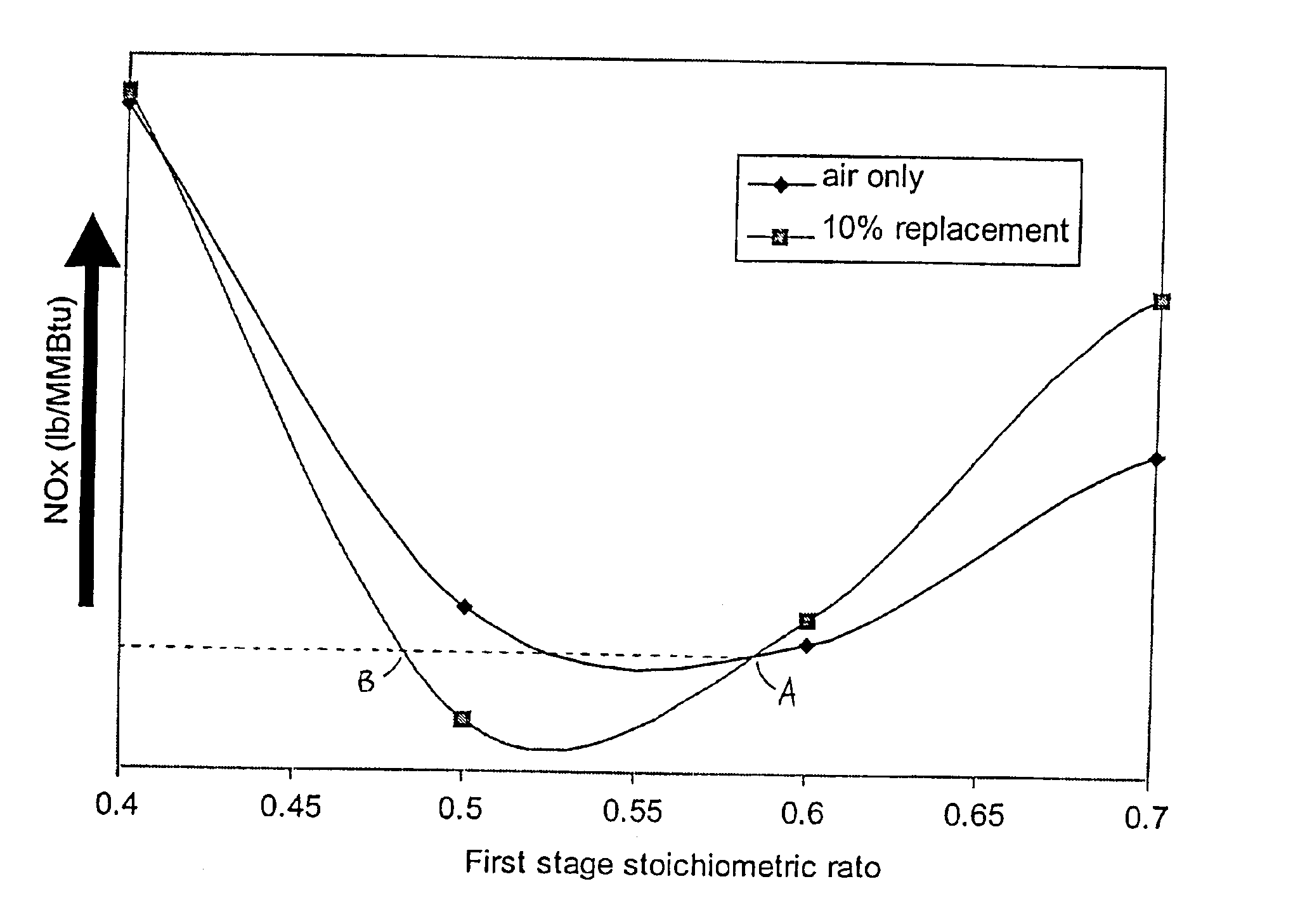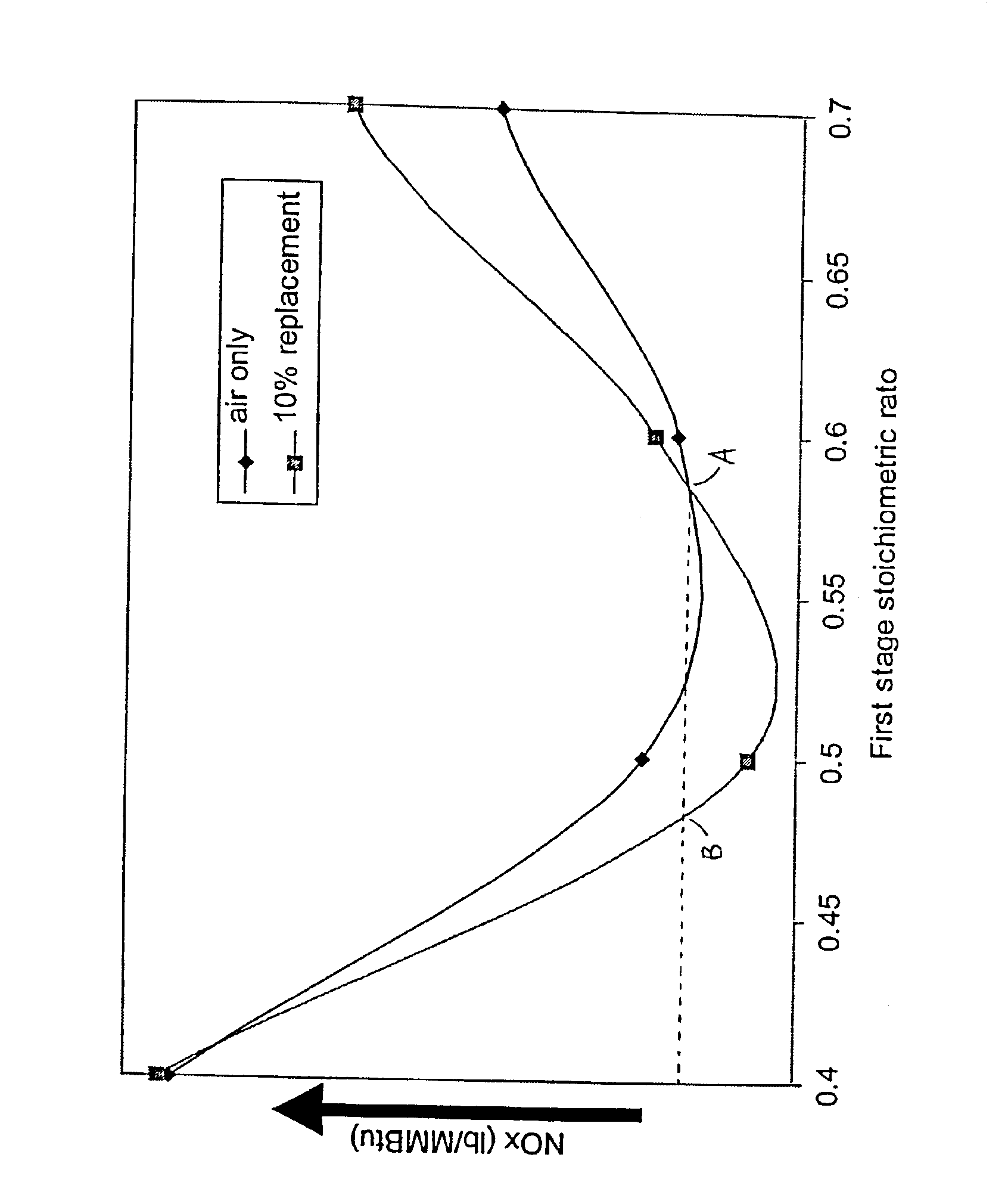Oxygen enhanced low NOx combustion
a hydrocarbon fuel and combustion technology, applied in the direction of combustion types, combustion using lumps and pulverulent fuels, lighting and heating apparatus, etc., can solve the problems of not reaching the emission limit, increasing carbon in the ash, and reducing flame stability, so as to reduce the amount of nox formed in the furnace, and reduce the amount of nox formed
- Summary
- Abstract
- Description
- Claims
- Application Information
AI Technical Summary
Benefits of technology
Problems solved by technology
Method used
Image
Examples
Embodiment Construction
[0020]The current invention overcomes the aforementioned hurdles while enhancing the effectiveness of staged combustion. It is also useful in single stage burners. This invention is applicable to combustion of hydrocarbon fuels such as coal, fuel oil (including heavy oil), and bitumen. Such fuels generally contain a minor amount of naturally occurring nitrogenous hydrocarbon compounds, typically heterocyclics.
[0021]In the following description, it should be understood that the oxygen content of the oxidant fed to a stage of a combustion device represents the overall average oxygen content taking the stage as a whole, even though within the stage the oxygen content can vary at different given points.
[0022]The current invention takes advantage of the discovery that within certain ranges and ratios of oxygen and fuel, using a surprisingly small amount of oxygen leads to a significant reduction of the formation of NOx, thus eliminating the need for extensive boiler modifications or the ...
PUM
 Login to View More
Login to View More Abstract
Description
Claims
Application Information
 Login to View More
Login to View More - R&D
- Intellectual Property
- Life Sciences
- Materials
- Tech Scout
- Unparalleled Data Quality
- Higher Quality Content
- 60% Fewer Hallucinations
Browse by: Latest US Patents, China's latest patents, Technical Efficacy Thesaurus, Application Domain, Technology Topic, Popular Technical Reports.
© 2025 PatSnap. All rights reserved.Legal|Privacy policy|Modern Slavery Act Transparency Statement|Sitemap|About US| Contact US: help@patsnap.com


